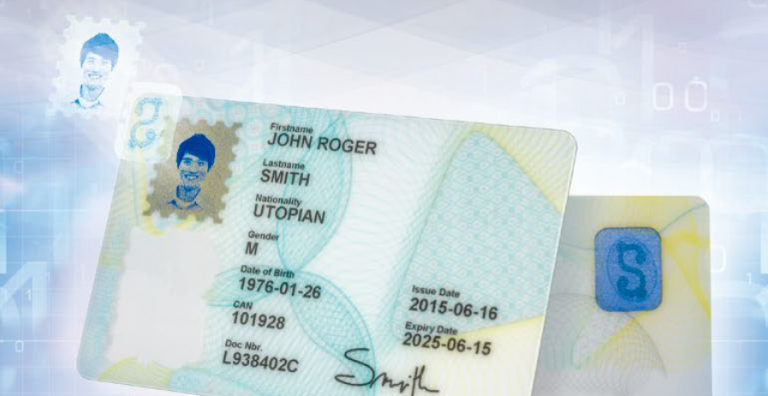Identity Document Security: Ensuring an Integrated Approach
An integrated approach to the design of security documents is one of the fundamental building blocks on which secure identity documents are created. Design should be a circular process that evolves and iterates to accommodate the document’s many features and manufacturing processes, with manufacturers and designers working together every step of the way. To be effective, this integrated approach must:
Consider Usability in the Design
The placement of features is often dictated by convention, international standards, or durability requirements. Usability is also a key consideration, since documents include a multitude of security features that compete for places of prominence and add the necessary level of protection. It takes considerable skill to blend all of this together to create a document which is not only secure but also useable and easily authenticated.
Whether law enforcement, border control, bank tellers, airline staff or shop workers, every user group has a specific interest in the document and a particular level of training. The focus of identity document design shouldn’t be the lowest common denominator nor the most highly skilled and trained. However, it should ensure that those individuals who have less training can still understand the features they are looking to authenticate. Those groups with more training have the ability to authenticate the document at a deeper level — often in different circumstances and settings and with more tools at their disposal. The use of multiple high-quality, obvious Level 1 security features that an examiner can authenticate visually, without the need for extra tools, allows for easy and confident authentication for users at every level of expertise. Level 2 and 3 features are still essential elements to allow easy and confident authentication of the document across all different user groups. While level 2 features require tools like UV lamps or magnifiers, level 3 features need specific equipment to be verified.
Implement Security in Different Dimensions
Considering the eight to nine data field requirements on identity documents such as name, surname and so on, designers are often left with spaces smaller than they’d like to place protective features. The best approach to this problem is to design in three dimensions. Polycarbonate data pages and cards appear to be flat 2D materials, but there are several layers and a lot of complexity built into their depth. Each feature’s layer protects another, and that depth can be read bottom to top just as other information is read left to right. This approach ensures that we can protect all the data fields by linking all the different areas of the document together.
Redesign Features Regularly to Be One Step Ahead of Forgers
In our industry, the one thing we can be certain of is that the documents we produce will be attacked, and attempts will be made to recreate, forge or simulate the features we use. Our ability to learn, adapt, understand and redesign is vital to counter these attacks; it also ensures that we’re leading the way in manufacturing cutting-edge, highly secure identity documents, as well as providing trusted advice to our customers.
Learn more in our white paper about how to best secure your identity documents with our five-in-one security solution, HID Mirage™.
Matt Sugdon, PhD, is the Director of Security Graphics at HID Global and leads the creative team producing security designs for passports, ID cards and other government issued credentials. Matt has worked in the security printing industry for over 20 years in a variety of technical and new product development roles.
